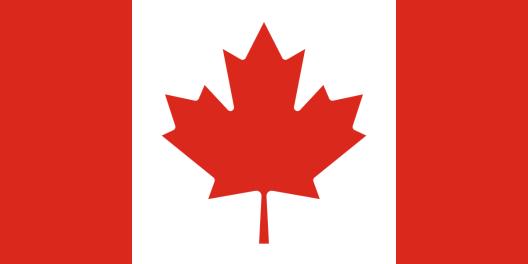Donate to Support Supercluster
Your support makes the Astronaut Database and Launch Tracker possible, and keeps all Supercluster content free.
SUPPORTSupercluster on Patreon
Your support makes the Astronaut Database and Launch Tracker possible, and keeps all Supercluster content free.
SUPPORT































This goes
to space
New Shepard Capsule (NS-28)
The mission
Blue Origin announced the six people flying on its NS-28 mission. The crew includes: Emily Calandrelli, Sharon Hagle, Marc Hagle, Austin Litteral, James (J.D.) Russell, and Henry (Hank) Wolfond. Sharon and Marc Hagle are both flying on New Shepard for the second time.
This mission will be the ninth human flight for the New Shepard program and the 28th in its history. To date, the program has flown 43 humans above the Kármán line, the internationally recognized boundary of space.
The Patch
Blue Origin released the NS-28 mission patch. A few of the symbols embedded include:
- The color pink and the girl in the signature pink overalls represents Emily Calandrelli.
- The centerline in the “2” represents Sharon and Marc Hagle’s second flight on New Shepard.
- The stars represent Austin Litteral’s vision for people among the stars.
- The people at the bottom represents J.D. Russell’s hope for generations of people expanding their understanding of the world.
- The wolf in the crew capsule’s window represents Hank Wolfond.
Courtesy of Blue Origin.
The Capsule
The New Shepard crew capsule is designed to take up to six paying passengers or a variety of scientific payloads on safe, suborbital flights.
The capsule has a full abort system, is completely automated, and does not need pilots for passenger flights.
Ticket sales (and prices) are not yet available.

On this
rocket
New Shepard
The New Shepard is a reusable suborbital rocket system developed by Blue Origin for space tourism and scientific research. Named after Alan Shepard, the first American astronaut to travel into space, the rocket is designed to take passengers and scientific payloads on brief trips to the edge of space. Its goal is to provide a safe and accessible way for people to experience space travel while also serving as a platform for researchers to conduct experiments in microgravity.
Specs
Height: 19.2m (63ft)
Diameter: 3.8 m (12.5 ft)
Mass: 75,000 kg (165,000 lb)
Stages: 1
New Shepard consists of two main parts: the propulsion module (booster) and the crew capsule. The propulsion module is responsible for lifting the capsule into space and is powered by Blue Origin's BE-3 engine, which burns liquid hydrogen and liquid oxygen (LH2/LOX). This engine produces only water vapor as exhaust, making the rocket one of the most environmentally friendly currently in operation. After the capsule reaches space, the booster returns to Earth and lands vertically, allowing it to be reused for future flights.
The crew capsule is designed to carry up to six passengers and offers large windows, providing breathtaking views of Earth and space during the brief time spent in microgravity. The capsule is fully autonomous, meaning no pilot is required. After its suborbital flight, the capsule returns to Earth using parachutes, landing softly in the desert.
The first test flight of New Shepard took place in 2015, and after several successful uncrewed tests, the system was cleared for human spaceflight. In July 2021, Blue Origin conducted its first crewed mission, which included founder Jeff Bezos and aviation pioneer Wally Funk. Since then, the company has completed several other crewed missions, carrying both paying customers and notable figures, including William Shatner.
Image courtesy of Blue Origin

From this
launch site
Launch Site One - Corn Ranch - Van Horn, Texas
Launch Site One, also known as Corn Ranch, is Blue Origin's primary launch facility, located near Van Horn, Texas. This private spaceport is used for testing and launching Blue Origin's New Shepard suborbital rocket system. The site is situated in a remote area of West Texas, providing a vast, open landscape that is ideal for rocket launches due to its minimal air traffic and low population density.
Corn Ranch spans approximately 165,000 acres (67,000 hectares) of land owned by Blue Origin. The large area allows for extensive development and testing activities. Key components of the site include the launch pad, where rockets are positioned for takeoff, and a landing area for the booster, which is designed to return to Earth and land vertically after completing its mission. The crew capsule, after its brief suborbital flight, lands in a different area within the site using parachutes.
In addition to launch and landing infrastructure, Launch Site One houses support facilities like a mission control center, pre-flight preparation buildings, and storage for rocket components and fuel. These facilities enable the site to handle both unmanned research payloads and the growing number of crewed space tourism flights conducted by New Shepard.
This location became especially significant after July 20, 2021, when Blue Origin launched its first crewed mission from Corn Ranch. The flight included Blue Origin’s founder Jeff Bezos, aviation pioneer Wally Funk, and two other passengers, marking the beginning of the company’s space tourism operations. Since then, the site has continued to be the launch location for all subsequent crewed missions of New Shepard.
The remote nature of the site ensures reduced environmental and safety risks during launches and landings, making it a strategic choice for Blue Origin’s expanding space operations. Van Horn, the nearest town, has gained attention due to the frequent rocket launches, positioning it as an emerging hub for commercial spaceflight.
Photo courtesy of Blue Origin.

Booster lands
here
Corn Ranch Landing Pad - Van Horn, Texas
The Corn Ranch Landing Pad, located near Van Horn, Texas, is a critical component of Blue Origin's launch operations for the New Shepard rocket system. This landing pad is specifically designed for the vertical landing of the New Shepard booster after it completes its ascent and suborbital flight. The launch and landing pads are located north of the checkout building and are 3.2 kilometers (2 miles) apart from each other, allowing for efficient operations and safety protocols.
The landing pad is situated in a vast, open area, providing ample space for the booster to return safely to the ground. By landing vertically, the booster can be refurbished and reused for future missions, significantly reducing the costs associated with spaceflight.
The facility was first utilized on November 23, 2015, when New Shepard made history by becoming the first rocket to achieve a successful vertical landing under its own power after a suborbital flight. Since then, the Corn Ranch Landing Pad has been used for multiple missions, demonstrating the reliability and reusability of the New Shepard system.
The remote location of the landing pad minimizes risks to populated areas and provides a safe environment for landing operations. The surrounding terrain is also well-suited for recovery efforts, as Blue Origin's teams can quickly access the landing site to assess the booster and prepare it for its next flight.
Photo courtesy of Blue Origin.

Capsule lands
here
Desert near Van Horn, Texas
After a successful launch, the rocket and capsule separate and take different journeys back to the ground in the desert near Van Horn, Texas. The capsule arcs up into space for a few moments of weightlessness before descending.
Three parachutes deploy to slow the capsule. Then, just before landing, a retrorocket fires to further reduce the capsule's speed for a gentle touchdown, safely away from the recently landed rocket.
For added safety and redundancy, the capsule can land with two of its three parachutes deployed, and the seats are designed to flex and absorb g-forces in the unlikely event of an off-nominal landing.
The capsule is equipped with a full abort system to ensure the safety of its human (or animal and cargo) passengers.
Photo courtesy of Blue Origin.

GET THE SUPERCLUSTER APP
THE SUPERCLUSTER PODCAST
A podcast exploring the amazing milestones that changed space history, the wildest ideas that drive our future, and every development in this new Golden Age of Space.
Donate to support
Your support makes the Astronaut Database and Launch Tracker possible, and keeps all Supercluster content free.
SupportCOPYRIGHT 2021 SUPERCLUSTER LLC


